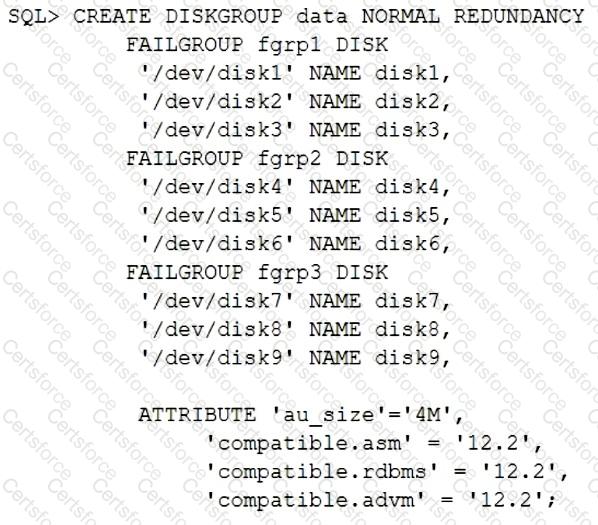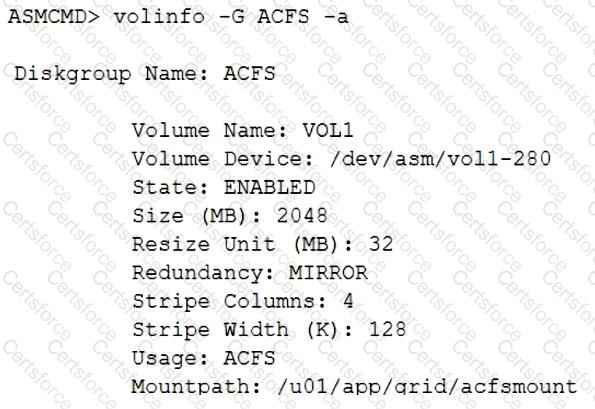Examine this command:

Which two statements are true about this disk group, created using Grid Infrastructure 19c? (Choose two.)
You must deploy several Oracle 19c databases on an Oracle Grid Infrastructure Managed Cluster, and are required to have the ability to perform these actions without down time:
1. Apply a Grid Infrastructure interim patch.
2. Apply a Grid Infrastructure Patch Set Update (PSU).
3. Apply a database on-line patch.
4. Apply a Grid Infrastructure patchset.
5. Apply a database patchset.
6. Upgrade Grid Infrastructure from one release to another.
7. Upgrade databases from one release to another.
Your plan is to perform these tasks:
1. Install and configure Oracle Grid Infrastructure on a local file system.
2. Install Oracle Database software on an ACFS file system.
3. Create several RAC One Node databases.
Which of the seven requirements are met by your plan?
Examine the output of this command:

TheACFSdisk group is a normal redundancy disk group with 5 GB of free space.
To increase the size of theACFSfile system, you execute this command as therootuser:
$ /sbin/acfsutil size +200M /u01/app/grid/acfsmount
Which two statements are true regarding the outcome of this command? (Choose two.)
Which two commands will stop the Oracle High Availability Services (OHAS) and prevent it from starting automatically at system boot on the local node? (Choose two.)
Which two statements are true regarding ASM when installing Oracle Grid Infrastructure 19c? (Choose two.)
Which three statements are true concerning activation of a user-defined policy in Oracle 19c Clusterware? (Choose three.)
Which three statements are true about ASM Cloud File System (ACFS) auditing? (Choose three.)
Which two statements are true aboutv$asm-views in a clustered environment? (Choose two.)
Which two statements are true regarding the default service that is automatically created upon PDB creation in a RAC database environment? (Choose two.)
You support a RAC database with these characteristics:
1. There are six instances.
2. Server Pool prod has a maximum of four servers.
3. CRM is a policy managed, uniform service using Server Poolprod.
4. ERP is a policy managed, singleton service using Server Poolprod.
5. Grid infrastructure is installed and running in its default configuration.
Which four benefits are provided by this configuration in Oracle 19c? (Choose four.)